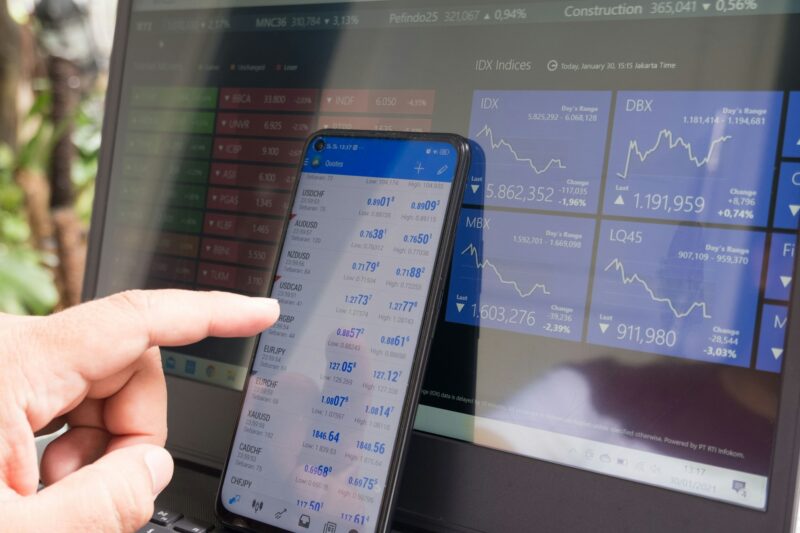Trading forex can be lucrative, making it an exciting path to wealth creation.
However, only a tiny percentage get there; trading can be a painful experience for the rest. When new traders jump in, they are all pumped up to make a kill out of the market, sometimes not even thinking of the serious consequences of not having a trading strategy that works.
So, they end up frustrated with the turn of events.
But there are success stories out there that you’ve probably seen—we are talking about those traders who seem to have cracked the code. But how do they do it? They use effective trading strategies. The reality is that without a strategy, you’re doomed to fail.
This guide provides a simple approach to forex trading using some of the best trading strategies.
Let’s break them down and put you on a path towards success!
1. Learn Basic Forex Market
Before trading forex on a reliable platform, you should know how the market works. You are trading in the world’s largest, most liquid financial marketplace, right? Start by understanding the basics, like interpreting charts and using leverage. The more you know, the more confident you will be in trading forex.
2. Use a Good Forex Trading Strategy

A well-structured trading plan should outline the main things: your trading goals, strategies, and risk tolerance. However, there’s no universal strategy that fits everyone. So, find a strategy that aligns with your risk tolerance and trading goals. Then, keep adjusting it to make it better.
3. Risk Management ─ Don’t Lose Your Capital
When starting, most traders often throw risk management out the window, but that’s the secret to long-term success. It isn’t just a suggestion- a robust risk management plan is a must.
Here are some practical risk management tips you should follow:
- Use stop-loss orders ─ These handy tools automatically close your trade if your trade goes against you by a set amount. They are your safety net, as they help limit losses.
- Limit leverage ─ Leverage can multiply profits as it can cause losses when used responsibly. When you’re a beginner, you should use a low leverage until you’re comfortable with your strategy.
- Stick to the 1% risk rule ─ Never risk more than 1% of your capital on a single trade.
4. Use Technical and Fundamental Analysis
Any successful trader will tell you the secret to success lies in analysis; combining technical and fundamental analysis is good for making better decisions. In technical analysis, we try to determine the direction of the market using price charts, historical data, and indicators such as moving averages and the Relative Strength Index (RSI). The better the analysis, the more accurate you can tell the right trades and their entry or exits.
With fundamental analysis, we are examining the bigger picture. This examines how these economic indicators (interest rates and geopolitical events that affect the value of a country’s currency or stock). The better you interpret the economic performance and market sentiments, the more informed your trading decisions get.
Combining both analyses gives you a full view of the market to know what to expect and how to position yourself.
5. Use a Trading Plan

A plan is your guide that stops emotions from driving you off course. It begins with setting up realistic goals. Apart from the overall trading goals (earn a stable monthly profit or grow your account), you need to be clear about each trade, like how much you want to make.
You should also keep a trading journal, as it helps you understand your decisions. Write down everything you ever did and traded, why you did it, and how it worked out. Looking back, you’ll see patterns and understand what works and what doesn’t.
Having a good structure helps you create good habits and stay on track.
6. Control Your Emotions
Trading stirs up your emotions more than you can imagine. Whether it’s the fear of losing the money you’ve worked hard for, the greed of wanting to get just a little extra, or the impatience that you want to jump into the market even when the time is not right, these emotions all lead to bad decisions.
It’s very important to stay calm and execute a sound strategy. By avoiding overtrading, you will avoid letting emotions get the better of you.
Sometimes less is more, and even though it might be tempting to take every opportunity, don’t. But only trade when you get clear signals from your plan. Don’t forget – it’s not about being in the market all the time; it’s about making smart moves.
Fatigue is inevitable after being glued to your screen for a couple of hours, resulting in poor decisions. Take that break, whether a short walk or just relaxing off the screens; you will return to the charts with a clearer perspective.
7. Learn and Adapt

The forex market is always changing. To grow as a trader, you must keep up with the market and adapt. Therefore, be informed of market news and learn what’s happening in the world markets and what impacts the market.
You also want to try alternate strategies. The best approach is to use a demo account to test those new ideas without losing money. That’s how you can learn what works in different market conditions.
Another good way to learn is to join trading communities. There’s so much knowledge out there; connecting with fellow traders can help you grow. You can also learn new ideas and strategies online in forums, social media, or local meetups.
Conclusion
You don’t have to learn complex formulas to succeed in forex trading. If you apply these simple strategies, you will sharpen your skills and increase your chances as well.
A key to successful trading is understanding the market, proper analysis, good planning, numbing emotions, and practicing discipline. It’s a journey, so every trade is a lesson, and every mistake is a chance to learn.
Related Posts:
- Finding the Best Trading Platform and Top Prop Firms…
- A Simple Unicode Invisible Character Can Save Your…
- Simple Ways to Earn More with Your Vacation Rental
- Why Your Enterprise Analytics Strategy Matters
- How to Use Matka Results to Improve Your Betting Strategy
- 5 Effective Website Strategy in Securing Important…








